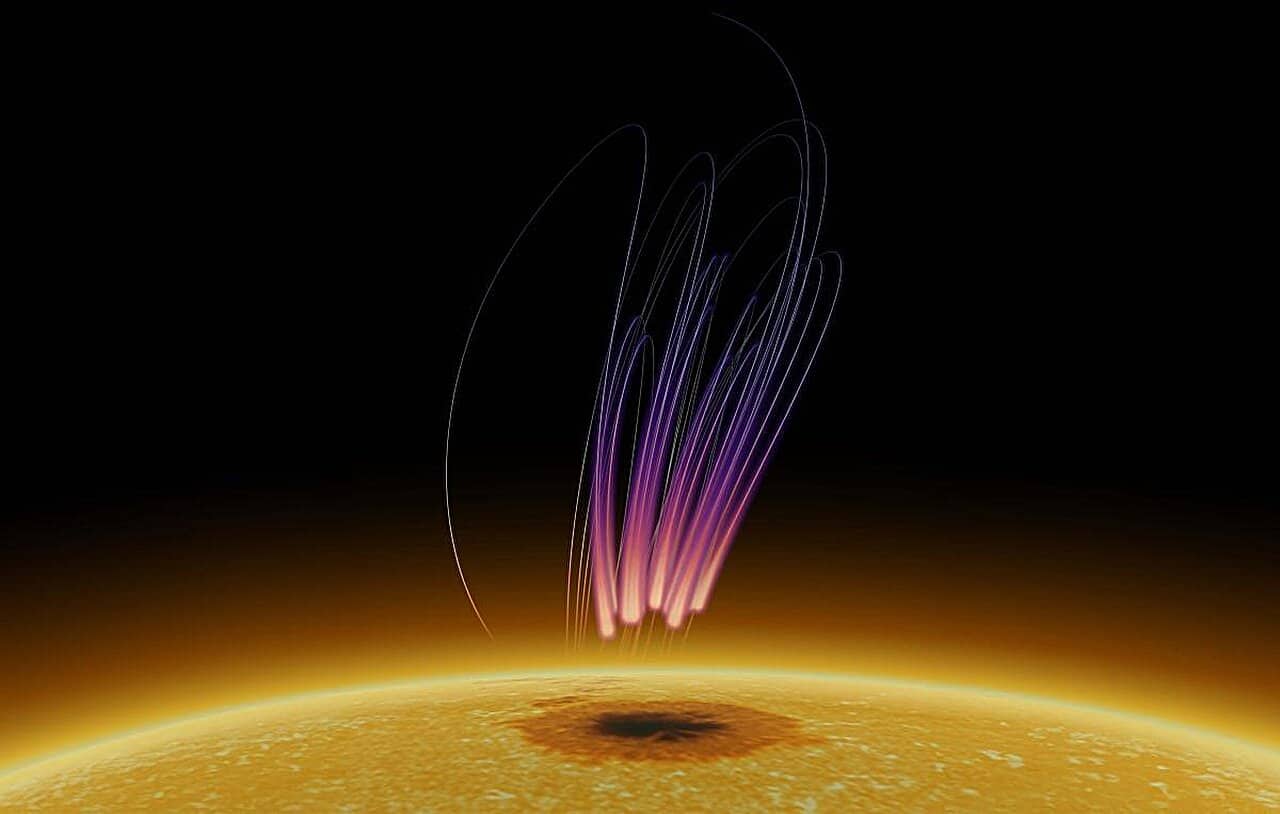
In the heart of the solar system, 24,855 miles above a dark region on our star, the Sun, something remarkable is unfolding. A team of astronomers has uncovered aurora-like radio emissions, emanating from a sunspot — a darker and cooler area on the Sun’s surface. The discovery adds a new layer of complexity to the inner workings of our star.
The Hidden Lights of the Sun
Sunspots are intriguing. Wrapped in magnetic fields about 2,500 times stronger than Earth’s, these areas are cooler than the Sun’s brighter regions. It’s this intense magnetism that’s key to understanding the newly detected radio emissions.
First observed in April 2016 by the Jansky Very Large Array, these emissions share characteristics with Earth’s auroras — like spectra and polarization — but they’re unique in their duration and frequency range.
“We’ve detected a peculiar type of long-lasting polarized radio bursts emanating from a sunspot, persisting for over a week,” said Sijie Yu, a scientist at the New Jersey Institute of Technology’s (NJIT) Center for Solar-Terrestrial Research.
“This is quite unlike the typical, transient solar radio bursts typically lasting minutes or hours. It’s an exciting discovery that has the potential to alter our comprehension of stellar magnetic processes.”
To appreciate the distinctiveness of the sunspot auroras, a comparison with Earth’s Northern Lights may be useful.
Auroras on Earth form when charged particles from the Sun interact with Earth’s magnetic field and atmosphere, causing atmospheric gases to emit colorful light displays. Oxygen contributes red and green, while nitrogen adds blue and purple.
Auroras have been detected on virtually all planets in the solar system, even on four of Jupiter’s moons. It’s perhaps not that surprising to find these can occur around the Sun too.
However, the Sun’s auroral emissions differ markedly — they manifest at significantly higher frequencies, owing to the sunspot’s potent magnetic field. Although we can’t see them with the naked eye, these intriguing emissions are nevertheless present.
The discovery isn’t just about our Sun. Researchers believe these “sunspot radio auroras” could be a common feature in other stars, particularly M-dwarfs.
“We’re beginning to piece together the puzzle of how energetic particles and magnetic fields interact in a system with the presence of long-lasting starspots, not just on our own sun but also on stars far beyond our solar system,” said NJIT solar researcher Surajit Mondal.
“By understanding these signals from our own sun, we can better interpret the powerful emissions from the most common star type in the universe, M-dwarfs, which may reveal fundamental connections in astrophysical phenomena,” added Dale Gary, NJIT-CSTR distinguished professor of physics.
Tools like NASA’s Solar Orbiter and Parker Solar Probe are probing deeper into the Sun’s mysteries. Both are bound to reveal more intriguing details about these solar auroras and perhaps other hidden features waiting to be discovered.
The findings appeared in the journal Nature Astronomy.






